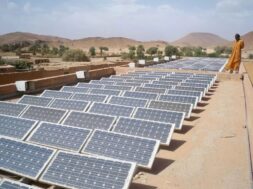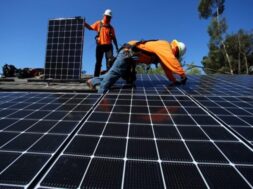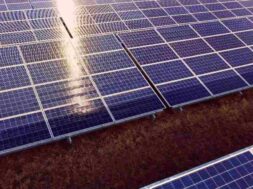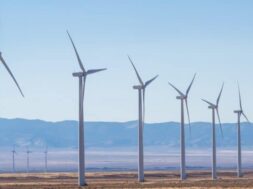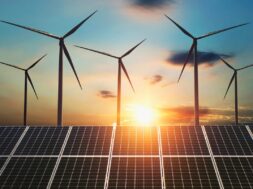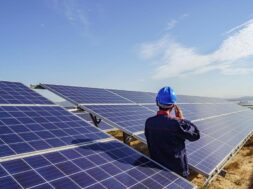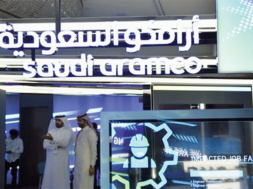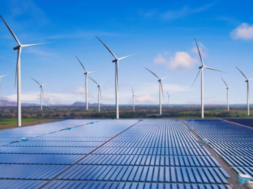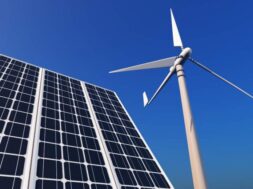
Solar Power: Spearheading the Global Energy Revolution
The rapid adoption of solar energy in the Middle East is triggering a profound shift in the global energy system and powering the new era of clean energy
This year, the world will install as much solar power as the entire capacity that existed globally in 2017. Next year, 2018’s total will be added to existing levels.
In these two years, worldwide solar capacity will almost double. If Bloomberg NEF is correct in their forecasts, an energy revolution is under way.
Growth between 2017 and 2019 was, by past standards, unspectacular. Then, the pandemic disrupted energy demand and investment.
But Russia’s invasion of Ukraine, the consequent rise in energy prices and security concerns, as well as the substantial post-pandemic stimulus and green investment packages have turbocharged expansion.
A simple extrapolation of current growth rates would have solar supplying all the electricity in the world by mid-century.
Solar is now a mainstream power source, but one still advancing at a furious pace and extending into new markets. In any reasonably sunny area, it is the cheapest source of new electricity.
It is succeeding on its own economic merits without needing to rely on its additional benefits of being near-zero carbon and producing no local air or water pollution.
After a post-pandemic bump in costs, driven by a rise in the cost of the basic material polysilicon, the price of solar modules is dropping again.
The supply chain looks sufficient: enough polysilicon factories already to make 570 gigawatts of solar panels per year, the level of installation that BNEF thinks will be reached in 2026.
Solar is swelling in some perhaps surprising places. The global heavyweights in new installations last year were predictable enough: China, the US and India, with large, tropical Brazil in fourth and longtime solar stalwart Germany sixth.
But the small, densely-populated Netherlands squeezed into fifth. Coal-heavy Poland was another European leader.
Vietnam grew solidly again after its breakneck pace of 2019 and 2020, when it went from about zero to about 17 gigawatts, adding the equivalent of an entire Spain of solar in two years.
The Middle East is increasingly playing its part. Emirates Water and Electricity Company (Ewec) thinks it will need 16 gigawatts of solar by 2035 to meet Abu Dhabi’s clean energy commitments, up from about 3.2 gigawatts currently existing or under construction.
Earlier this month, Dubai Electricity and Water Authority selected Masdar as the preferred bidder for the 1.8 gigawatt sixth phase of the Mohammed bin Rashid solar park for 1.6215 US cents per kilowatt hour, the lowest it has achieved.
For comparison, in 2020, the fourth phase was awarded at 2.4 cents per kilowatt hour, then a remarkably low price. Phase 6 should be completed by 2026, when the park will reach its full intended capacity of 5 gigawatts, four years ahead of schedule. Then, Dubai can plan the next steps in its solar journey.
Last Sunday, Saudi Arabia secured financing for the 2.6 gigawatts Shuaibah solar farm, south of Jeddah, which will be one of the world’s largest.
The kingdom’s power procurement company signed agreements for 4.55 gigawatts across three projects in May. The country wants to have 42.7 gigawatts of solar power by 2030.
The power of the sun is spreading to other regional countries that have done little until now: Bahrain agreed two weeks ago to build its first sizeable solar park, and in June, Iraq concluded a combined oil, gas, water and solar package led by France’s TotalEnergies, with Saudi Arabia’s Acwa Power slated to deliver 1 gigawatt of solar power.
Last month, Algeria accepted 77 expressions of interest for its first large solar auction, totalling 2 gigawatts.
But these are baby steps. Over the next two decades, the Mena region will install hundreds of gigawatts of solar, far beyond the plans of utilities today.
This will not just replace gas and oil-powered generation but will also be needed to power the petroleum sector, create new zero-emission heavy industries such as aluminium and steel, and make the millions of tonnes of hydrogen and derived fuels the region will supply to the rest of the world.
Solar cannot satisfy all needs on its own. Sustaining the next stage of its expansion faces several challenges.
The supply chain has to become much cleaner and more diverse – despite the brutal logic of Chinese competitiveness – and to access or substitute various critical metals, notably copper, silver, tin and lithium, for supporting batteries.
Grids must be expanded, reinforced and revamped, and the amount of electricity storage from batteries and other methods hugely increased to ensure that solar can supply at night and through the shorter, humid days of the Gulf autumn.
New technologies for large, low-cost, long-duration batteries are important. Smart grids and flexible tariffs, varying by time of day, are needed to balance solar generation with demand intelligently.
In some smaller, more crowded regional countries, securing suitable large, empty land plots will become more challenging.
Utilities need to plan their locations. Dubai had by last year installed 0.5 gigawatts of “rooftop” solar on buildings, and Lebanese and Yemenis have turned to photovoltaic panels to replace their non-existent national grids, but otherwise, there has been little Mena take-up of solar on buildings.
Floating solar power, though more expensive, has gained interest in Europe and Asia – Dubai-based Enerwhere has installed the Gulf’s first example at Abu Dhabi’s Nurai resort island.
More, bigger international connections will use the wider region’s spare land and spread generation across different time zones and demand patterns. But that needs more trust, more transparent electricity markets, and stronger, more capable trade institutions.
Exploiting the sun to the fullest, teamed intelligently with other generation and storage, will give the Mena region the world’s cheapest large-scale, low-carbon electricity.
That is positive for net-zero goals. Even more excitingly, it can herald an industrial, economic and employment boom – for countries that move at the speed of light.
